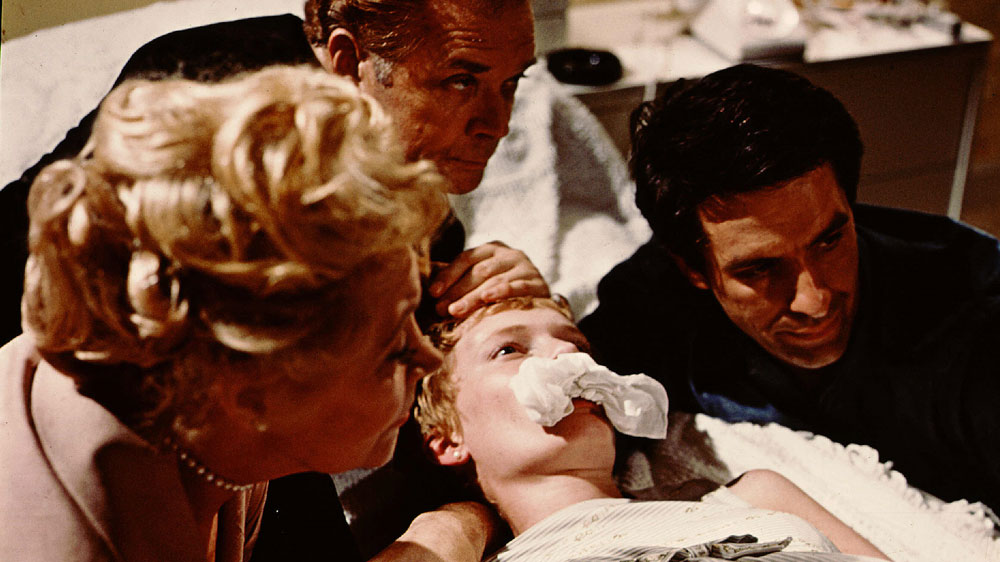‘Rosemary’s Baby’ Gave Birth to a New Breed of Terror When It Premiered 50 Years Ago
By Tim Gray
LOS ANGELES (Variety.com) – June 12 marks the 50th anniversary of “Rosemary’s Baby,” which still remains a gold standard for suspense movies. Though Ira Levin’s novel was a hit, the film adaptation “remained a big question mark until its initial screenings,” Variety wrote on May 29, 1968. The skepticism was because director Roman Polanski’s 1967 “The Fearless Vampire Killers” lost money, while star Mia Farrow was unproven at the box office. But Variety reviewer A.D. Murphy predicted it would be a success and praised the film’s “brilliant” work, above and below the line. With a budget of $3.2 million, the movie was one of the year’s biggest winners, bringing $12.3 million in rentals to Paramount. It was also subtly radical: While other 1960s shockers took place in isolated locations (“Psycho,” “The Birds,” “Night of the Living Dead”) or creaky old homes (“The Haunting,” “House of Usher”), “Rosemary’s Baby” found horror in everyday urban settings. And after the assassinations of Martin Luther King Jr. and Robert Kennedy that year, the film struck a chord with its message: You can’t trust anyone.
“Rosemary’s Baby” opened two months after the death of King, and a week after RFK was killed. In both those cases, as with the JFK assassination in 1963, much of the public was dubious whether the true culprits had been arrested or whether these deaths came from a widespread, organized plot. When the Variety review described Rosemary as “the lone victim of a conspiracy,” it was clear that the film had tapped into 1960s paranoia.
In the decade before “Rosemary’s Baby” opened, the news also carried reports about the 1959 murders of the Clutter family in Kansas, the 1966 mass shootings from a University of Texas tower, and the killing of eight student nurses in South Chicago. Writer-director Polanski reminded audience that zombies, vampires and giant insects are scary fun, but true terror comes from human beings.
The movie was also grounded in the real world thanks to casual references to familiar products like Scrabble, Yamaha motorcycles and the famed 1966 Time magazine cover asking “Is God Dead?” While Polanski ensured the movie’s credibility, he also added some ambiguity. The plot centers on Satanists and he was an atheist, so he wanted to leave it open to interpretation whether these events are real, or if Rosemary has gone crazy and is imagining everything.
The Variety review also noted a 1968 breakthrough: The brief but then-shocking use of a word that was “slang for defecation,” which hadn’t been heard before in a major-studio film.
Levin’s book and Polanski’s film opened the door for works like “The Exorcist,” “The Omen,” the novels of Stephen King and Anne Rice, and eventually Jordan Peele’s “Get Out.”
In the 21st century, the names of Polanski and Farrow have been synonymous with scandal, due to his 1978 rape conviction and her child molestation claims against Woody Allen. But in 1968, the Polish filmmaker was admired but barely known in the U.S. outside the art-house circuit. Farrow was best known for her role in ABC-TV’s nighttime soap opera “Peyton Place” and her brief marriage to Frank Sinatra, when she was 21 and he was 50. “Rosemary’s Baby” put them both on the worldwide map, and it was also a boost for producer William Castle. He had been responsible for money-making films (“The Tingler,” “House on Haunted Hill”), but they were often gimmicky and camp. For Castle, and almost every one else involved, “Rosemary’s Baby” remains the primo credit.
In July, Reel Art Press will publish “This is No Dream,” a book by James Munn about the making of the film.

